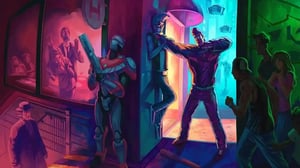
Digital Illustrator
digital illustrator including required skills, responsibilities and salary.
Student work by Ahmed Albastaki
TABLE OF CONTENTS
What does a digital illustrator do?
Often working from a client/employer’s creative brief, a digital illustrator creates a narrative image that tells a story, conveys an emotion or mood, or sells a concept or product.
The work of a digital illustrator can include artwork and high-end special effects for film, elements for video games, advertisements, graphic design, book cover art, etc.
Digital illustrator job description
Digital illustrators create original images for either commissioned work or personal projects.
As the term implies, they work using computer software on PCs or graphics tablets. Each artist has their own unique process and each project requires different techniques.
Initial sketches for a piece may start as hand drawings but the finished product is delivered digitally for digital media such as film and television effects, publishing, web design, advertisements, educational resources, video games, etc.
The digital illustrator is briefed on the project and they produce artwork that best communicates the idea, character, visuals, scenario, sequence, icon, etc. The creative process is one that works on developing these illustrations, refining and reworking drafts until the final artwork is signed off.
Most illustrators work as freelancers but some advertising agencies, publishing houses and large companies will have in-house illustrator roles.
Role and responsibilities of a digital illustrator in film and games:
- Liaising with the producer, publisher, client, etc regarding the brief for the project
- Illustrating with the audience in mind, finding the most effective way to communicate a story
- Presenting a series of drafts of the illustrations for approval
- Employing graphics in bitmap or vector formats as required
- Collaborating with team members regarding designs and workflows
- Working to a schedule
- Keeping project on budget
- Ensuring illustrations meet quality color standards
- Advising on intricacies of design genre, style, color palette, etc
- Delivering to client’s expectation
- Supplying final artwork to set specifications
The digital illustration process is similar to other forms of illustrations, with initial rough sketches drawn using a graphics tablet and then refined using bitmap (Adobe Photoshop) and/or vector (Adobe Illustrator) applications.
The main difference between the two types is that bitmap, or painting, software creates photorealistic images and allows for special effects; while vector, or drawing, tools create images through anchor points to construct shapes and clean lines. A finished digital image may contain embedded layers of both types of graphics.
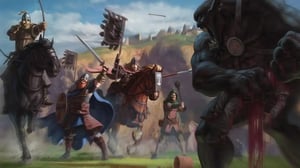
How much does a digital illustrator make?
Most digital illustrators will work as freelancers so calculating an hourly rate can be done by working out a formula based on a full-time wage.
Depending on location and employer, the average illustrator salary is around US$69,000, increasing with experience. (glassdoor.com)
To learn more about this field, visit: What is Digital Illustration? or What is Concept Art?
Skills required to become a digital illustrator for film and games
Digital illustrators must be equally adept at thinking creatively and remaining tech-savvy.
They are required to respond to constructive criticism and deliver what the client wants on time, within budget and in the correct format.
Their digital skills will constantly be put to the test as each project will require different formats, and digital tools are ever-changing and upgrading.
Film and game companies may look for the following skills in a digital illustrator:
- Training in digital illustration, graphic design, fine art
- Talent for visual communication, strong drawing skills
- Understanding of variety of digital format delivery items ie JPEG, TIFF, PDF, etc
- Experience working with geometric primitive shapes to create complex shapes
- Feel for shading and depicting three-dimensional shapes
- Familiarity with how pixels (picture elements) work
- Ability to create bitmap, vector and raster graphics
- Knowledge of normal, UV, bump and specular maps
- Familiarity with typography, an eye for incorporating text into graphics
- Experience in manipulating pixels, vertices and textures in CGI creation
- Fluency in the basics of geometry, optics, physics and perception
- Skills in producing graphs, charts, maps, icons, logos, infographics, diagrams, tables, schematics, plots, flowcharts etc
- Solid understanding of visual language - texture, color, dimension, scale, perspective, shade, composition, depth of field, proportion, spatial awareness, etc
- Good communication skills, ability to explain concepts and support artistic choices
- Skills in technical drawing
- Ability to adapt to various visual styles and genres
- Passion for the latest trends and techniques in design
- Team player, able to work independently
- Disciplined in delivering deadlines and keeping within budget
What software and tools do digital illustrators use?
Digital illustrators use digital tools to create their work. This includes graphics software and hardware such as PCs and graphics tablets. They may scan hand-drawn sketches, import images from the natural world and use photographs to create digital art.
Digital illustrators may need knowledge of a combination of the following software:
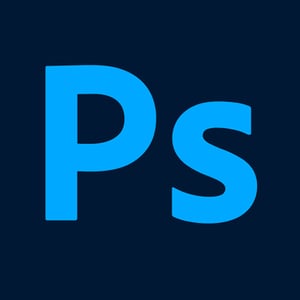
Adobe Photoshop is a raster graphics editor developed and published by Adobe for Windows and macOS. It was created in 1987 by Thomas and John Knoll
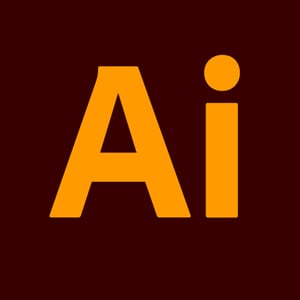
Adobe Illustrator is a vector graphics editor and design software developed and marketed by Adobe
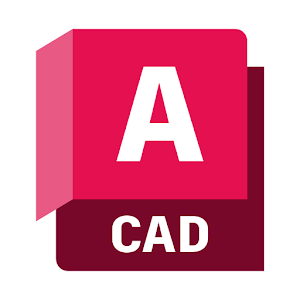
AutoCAD is a 2D and 3D computer-aided design software application developed by Autodesk

QuarkXPress is desktop publishing software for creating and editing complex page layouts in a WYSIWYG environment

Corel Painter is a raster-based digital art application created to simulate as accurately as possible the appearance and behavior of traditional media associated with drawing
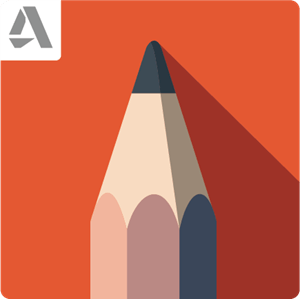
Sketchbook is a raster graphics software app intended for expressive drawing and concept sketching also for making animations
How to become a digital illustrator
Download software
Download free digital art software like Gimp, Krita, Sketchpad, FireAlpaca, and ArtWeaver to start practicing.
Practice
Sharpening your skills helps you grow and become more confident and reliable.
- Develop a solid understanding of art fundamentals—line, color, light, values, shape, composition, and perspective.
- Be observant of real-world references like people, creatures, and places which you can use as inspiration.
Build skills
Build the skills companies are listing on job sites. For more support, enroll in a reputable course. CG Spectrum’s illustration courses include mentorship from award-winning industry pros, an industry-led curriculum, and career services.
- Learn how to interpret a brief and execute feedback
- Regularly practice art fundamentals and digital painting techniques
Watch trends
Online tutorials, webinars, etc., can keep your skills fresh.
Attend conventions
Use conventions to network, meet likeminded people, and be inspired. This is how award-winning Illustrator Eric Wilkerson got his first professional book cover illustration commission after college graduation.
Network
Networking is vital to getting your name and skills recognized and meeting experts who can offer advice or even jobs. Familiarize yourself with the industry and build your community—publishing houses, authors, and illustrators.
Share work
Social media is great for showcasing work, building an audience, having your work shared by others, and seen by potential clients and collaborators.
Presentation
Your portfolio is how you will market your services. Make your work presentable and user-friendly to impress prospective clients.
Collaborate
Know someone designing a game who needs character art? Collaborating with your peers is not only fun, but it can also help you create more polished work for your portfolio.
Intern
Internships at VFX, game, or publishing studios can help you break into the industry. It’s one way to gain hands-on experience, network, and experience studio life.
Join competitions
Practice your skills and create portfolio pieces by participating in contests on platforms like The Rookies and ArtStation.
For further info on the skills and qualifications that will help you become an illustrator, why not check out our comprehensive guide?
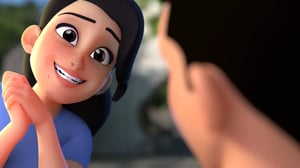
Ready to Start Your Film & Games Journey?
Download our course guide to see how we can help you on your pathway to your dream career.Tips to break into the illustration industry
Your portfolio should show you understand the foundations of art while also establishing your own personal style. According to professional Illustrator Eric Wilkerson, your portfolio needs to demonstrate consistency while ensuring it’s tailored to the right audience. Other tips include:
- Quality over quantity! Revise older work to meet your current standards
- Only include your best. Work in progress is fine
- Seek inspiration from professional artists’ portfolios
- Center on one art genre for cohesion
- If using a PDF, add chapters for easy viewing
- Use a platform that allows you to update your work easily (e.g., ArtStation, The Rookies, or Behance)
- Aim for a clean, intuitive, gallery-style website with enlargeable thumbnails
- Don’t overcrowd your homepage —5 images max
- Optimize your images and ensure they load properly
- Present each piece with a brief explanation (concept, rationale, brief)
- Show process, sketches, roughs, and reference
- If necessary, create mockups of how your art would look in various formats
- Triple-check for errors (layout, framing, spelling, etc.)
- Get feedback from at least 3 mentors or industry pros before publishing
- Feature both your commercial and personal art
- Keep your ‘about’ page concise; it can be less formal
- Share your finished portfolio on your social channels
Additional resources to help you get started as an illustrator:
- Check out the How to become a digital illustrator webinar
- Watch 10 Must-Have Soft & Hard Skills For Artists Working From Home
- Explore Adobe Photoshop’s free tutorials
- Visit Matt Kohr’s website Ctrl+Paint for info, reference, and tutorials
- Watch Sinix Design’s YouTube channel
- Sign up to art and design website Creative Bloq
- Join Theoretically’s Character Art School discord channel
- Use Anatomy for Sculptors’ free 3D écorché reference tool
- Warm up with Drawabox’s basic drawing exercises
- Participate in ArtStation or The Rookies’s art challenges to build up your portfolio
- Get inspired by Imagine FX magazine’s showcase page
- Enter online competitions like Spectrum: The Best in Fantastic Art
- Read Big Bad World of Concept Art for Video Games by Elliott J. Lilly
- Read Art Fundamentals: Theory and Practice
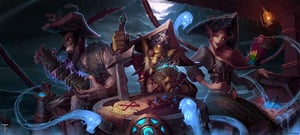
Industry Pathways
Tyler James, Curriculum Manager and Mentor of Concept Art & Illustration at CG Spectrum talks about his 18-year journey in the game industry. Passionate about fantasy from an early age, Tyler tells us about his early roles as a 3D character artist, to concept artist, and art director on projects like Neverwinter Nights 2, Hunted: The Demon's Forge, Rift, and Hex. Tyler also shares invaluable insights about building characters, facing imposter syndrome, and collaborating with world-class teams. !


